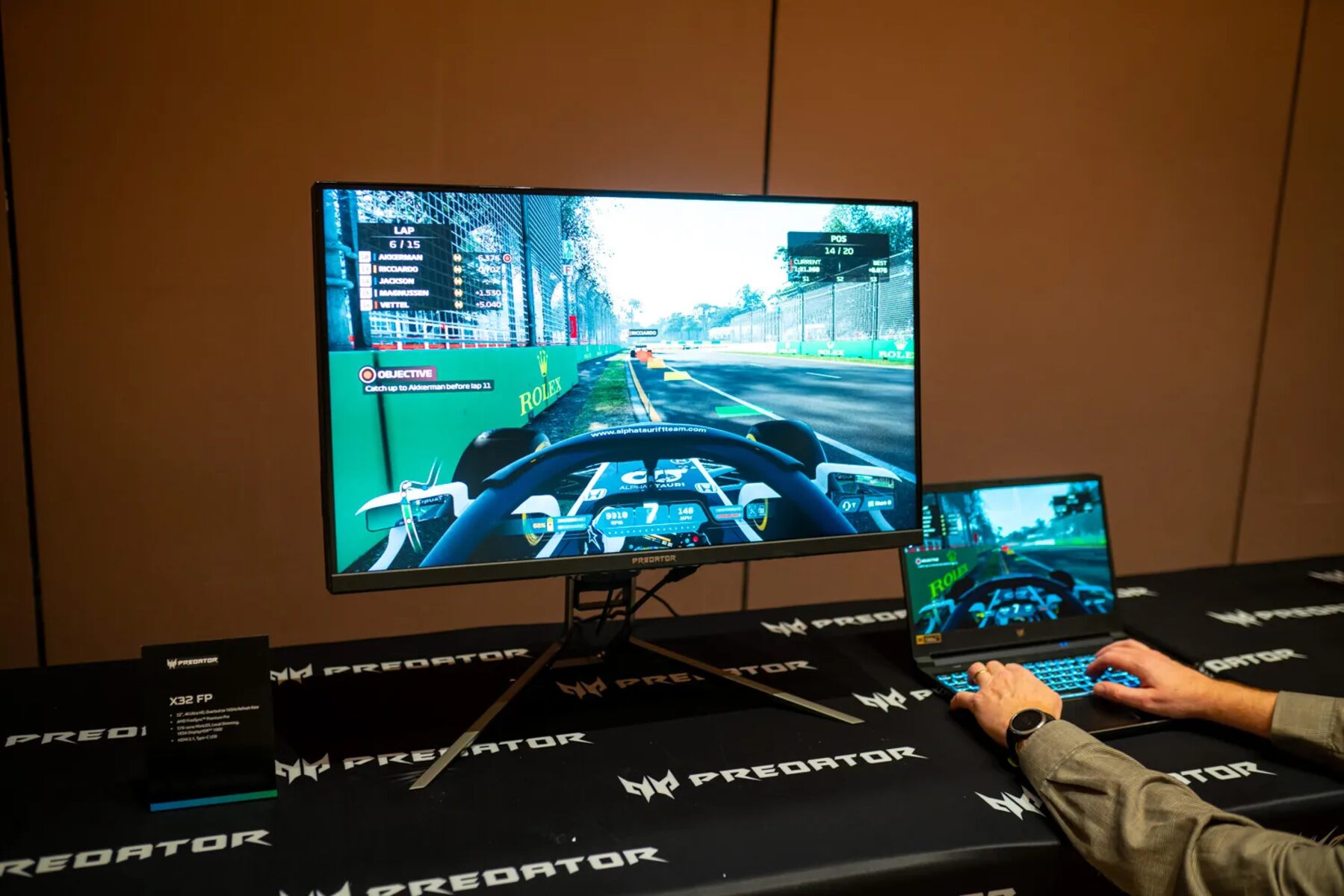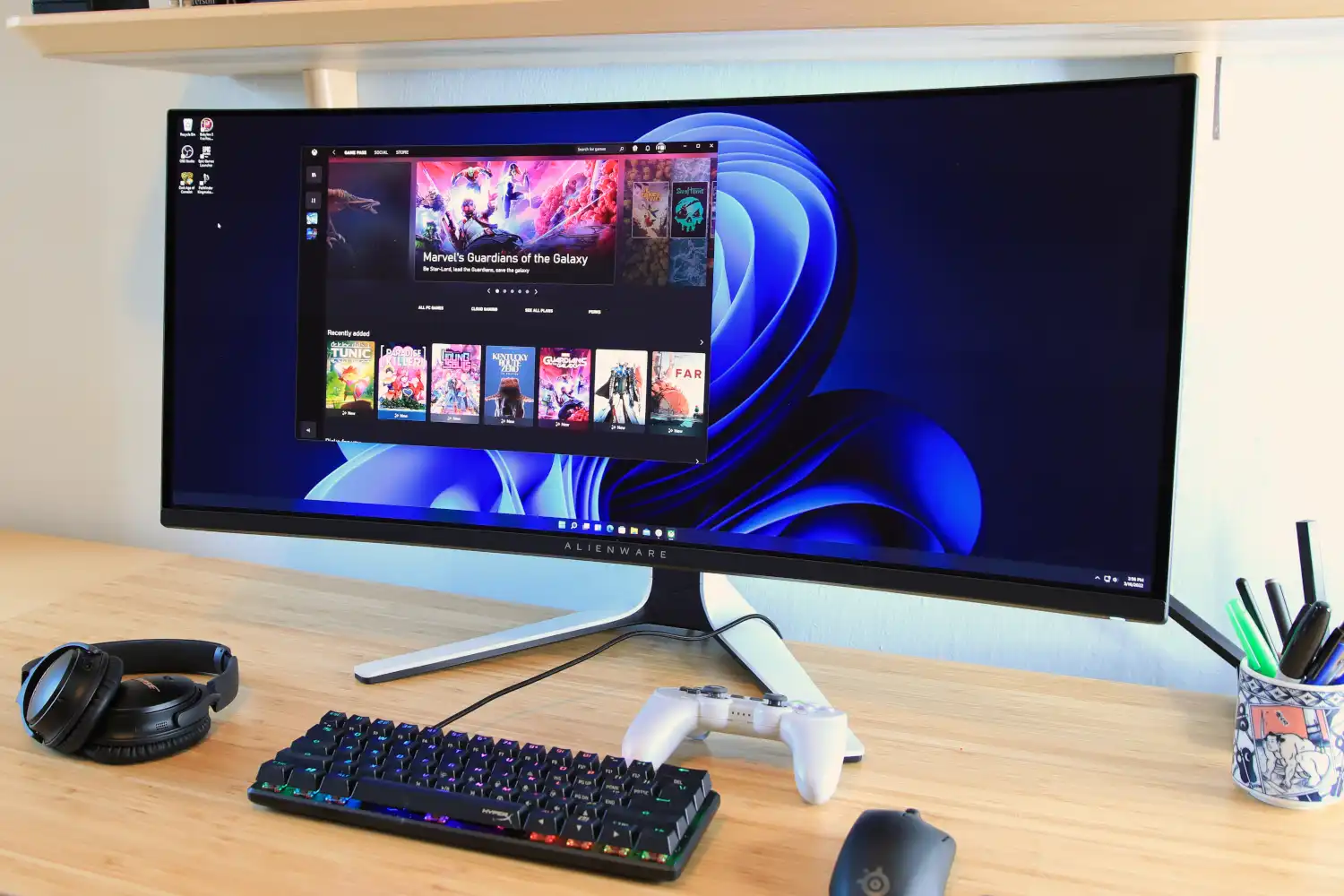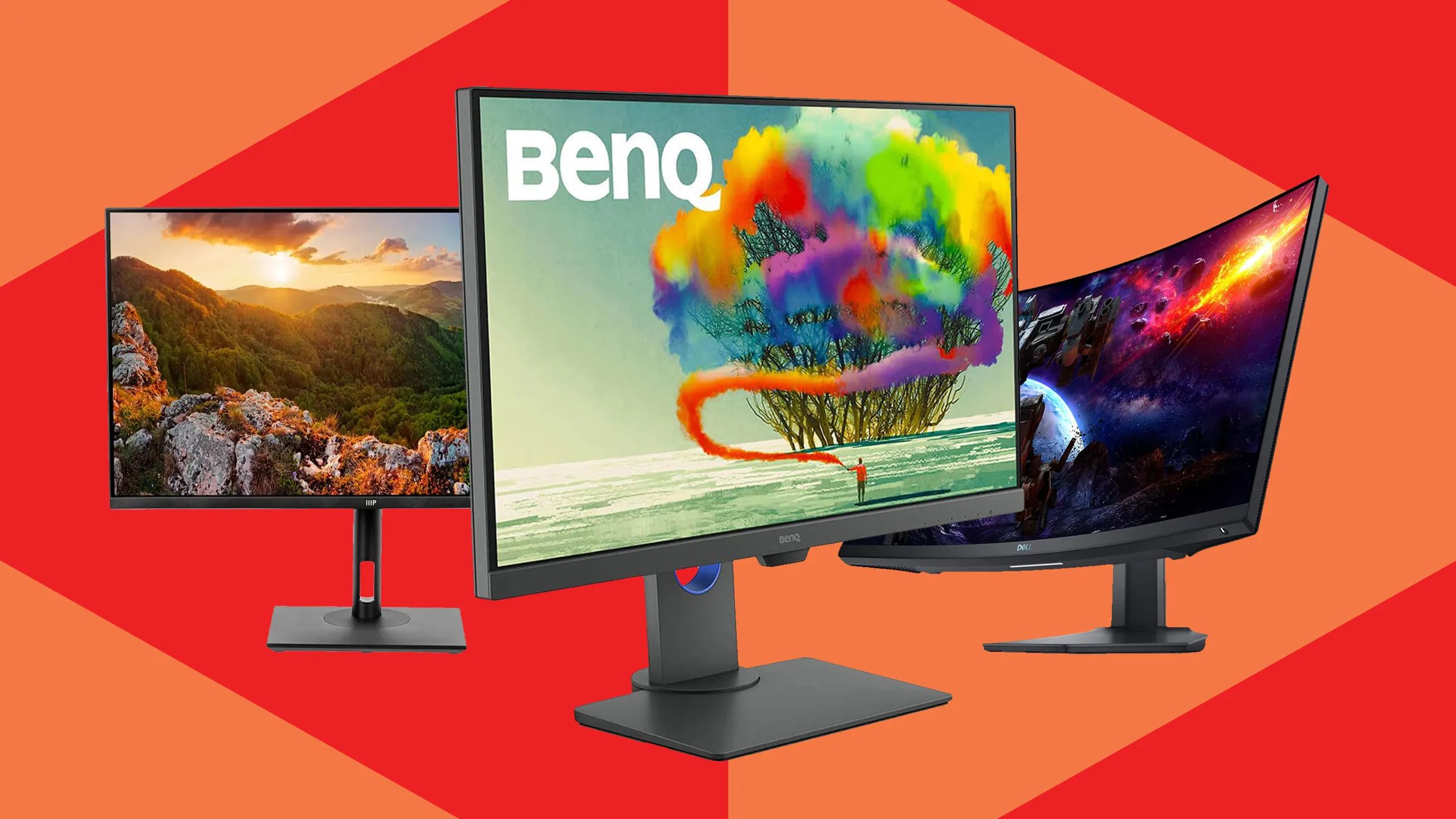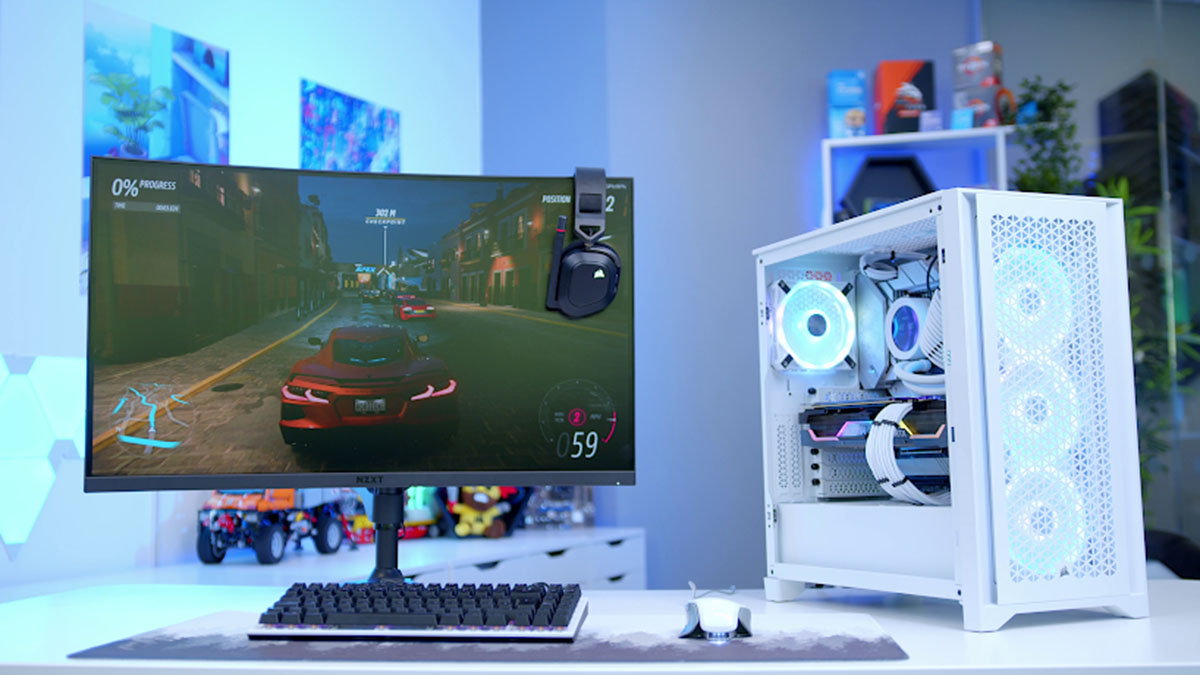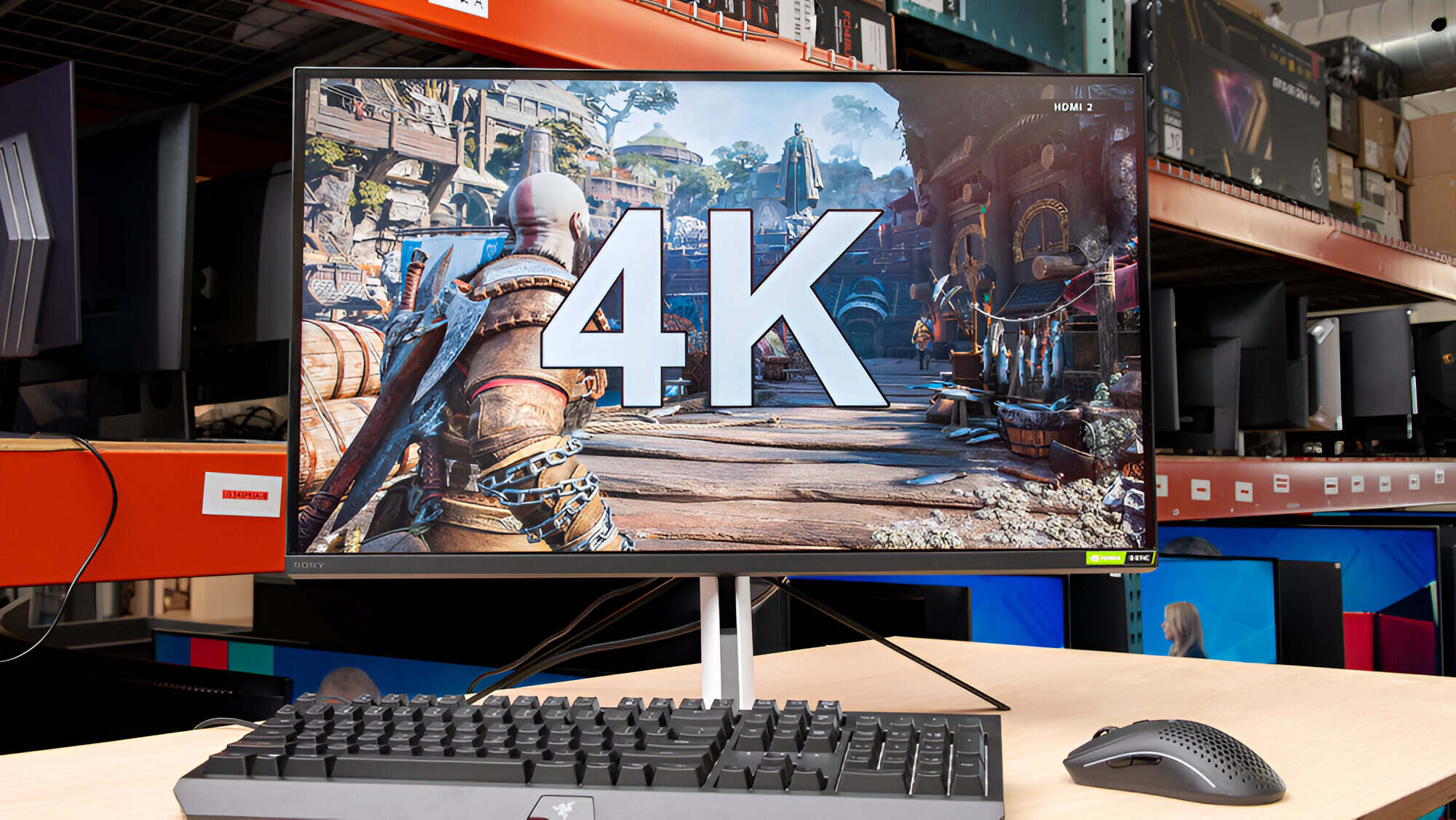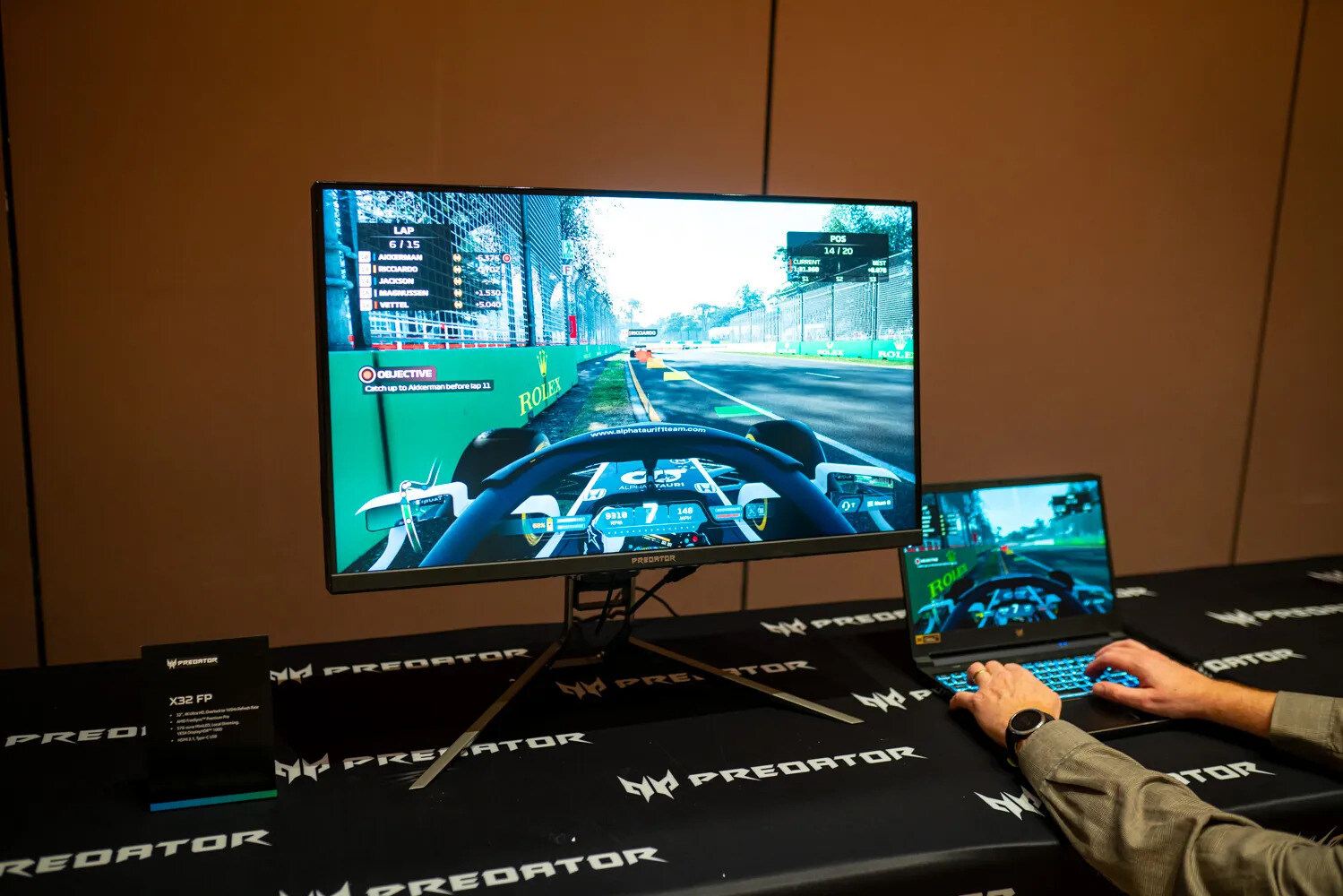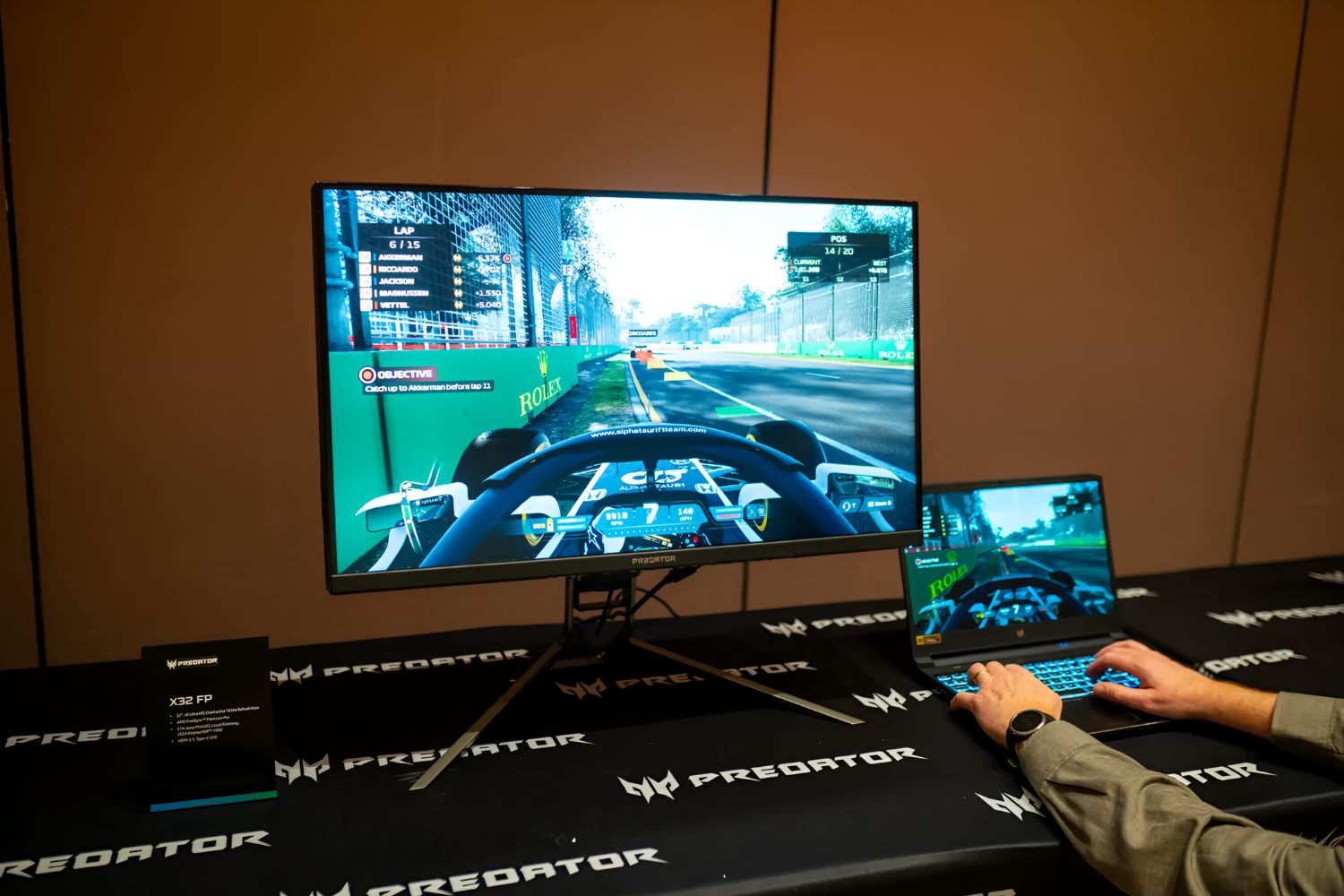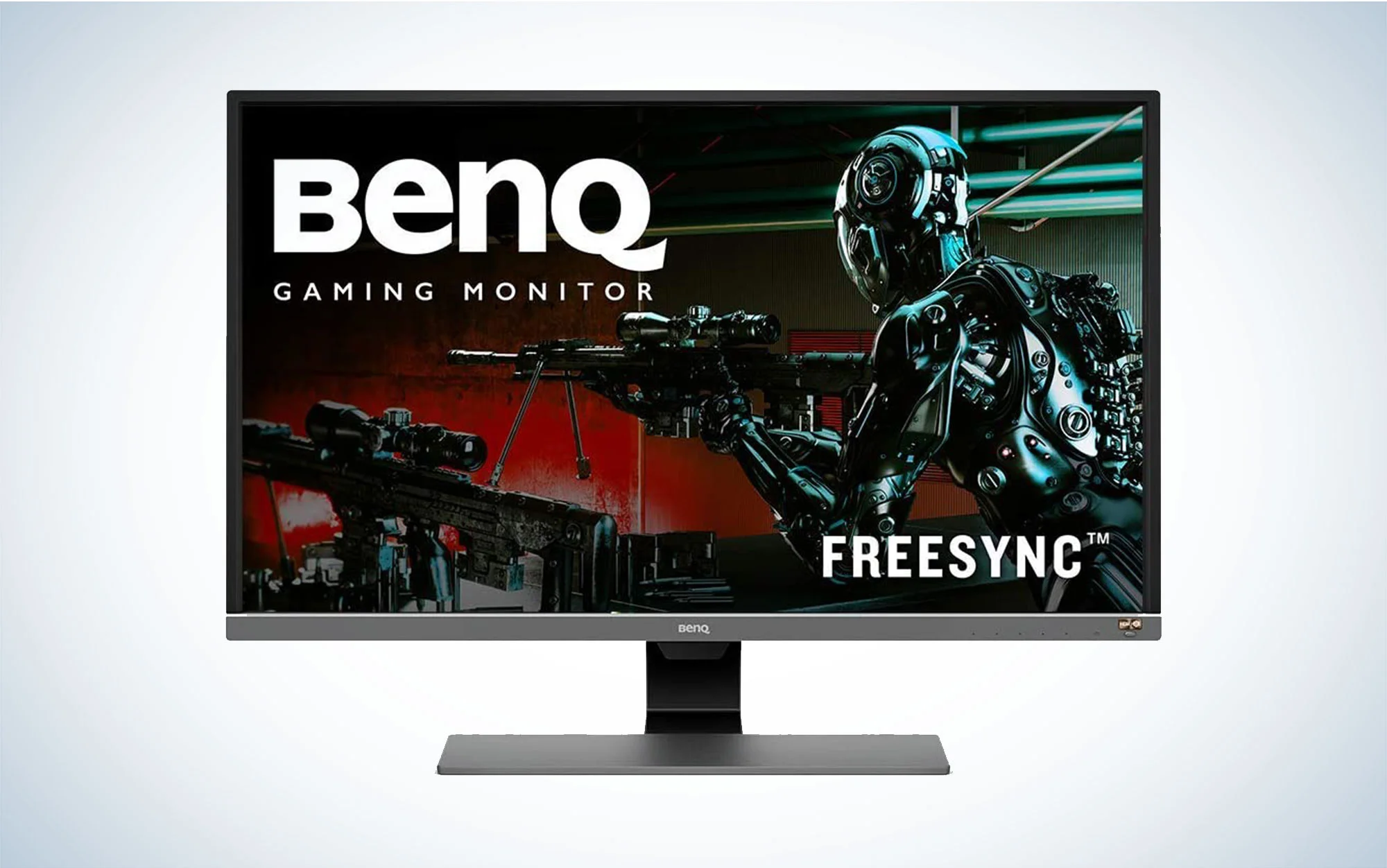Introduction
Gaming monitors have become an essential component for avid gamers looking to elevate their gaming experience. With advancements in technology, these monitors now offer larger screen sizes, higher resolutions, and faster refresh rates to cater to the demands of modern gaming. Among the various sizes available, the 32-inch gaming monitor has gained popularity due to its immersive display and optimal viewing experience.
Choosing the best 32-inch gaming monitor can be a daunting task, as there are various factors to consider. Whether you are a casual gamer or a competitive enthusiast, finding a monitor that suits your specific needs is crucial. From display technologies to refresh rates, panel types to resolution, and input lag to additional features, each aspect plays a significant role in determining the overall gaming experience.
In this guide, we will discuss the key factors to consider when choosing a 32-inch gaming monitor, as well as highlight some of the top recommendations available in the market. By the end, you will have a better understanding of what to look for in a monitor that will enhance your gaming sessions and give you a competitive edge.
Before delving into the technical aspects, it is important to understand the impact a high-quality gaming monitor can have on your overall gaming experience. The immersive display offered by a 32-inch monitor allows you to fully immerse yourself in the game and see intricate details, enhancing your gameplay and making it more enjoyable.
Additionally, a larger screen size provides a wider field of view, allowing you to better track your enemies or explore vast virtual landscapes. This is particularly advantageous in first-person shooter games or open-world RPGs, where every detail matters and quick reflexes can make a difference.
Furthermore, a 32-inch gaming monitor offers a balanced viewing experience, without straining your eyes. It provides a comfortable distance between you and the screen, while still maintaining an optimal level of immersion. This is especially important for long gaming sessions, as it helps reduce eye fatigue and prevents discomfort.
Now that we understand the importance of a high-quality gaming monitor, let’s explore the key factors to consider when choosing a 32-inch gaming monitor.
Factors to Consider When Choosing a 32-Inch Gaming Monitor
When selecting a 32-inch gaming monitor, there are several important factors to take into account. These factors will not only determine the overall visual experience but also impact your gaming performance. Let’s delve into the key considerations:
Resolution: The resolution of a gaming monitor determines the level of detail and clarity you will experience. For a 32-inch monitor, the most common resolutions are 1920 x 1080 pixels (Full HD), 2560 x 1440 pixels (QHD), and 3840 x 2160 pixels (4K Ultra HD). Higher resolutions offer sharper images, but keep in mind that your system’s hardware must be able to handle higher resolution gaming.
Refresh Rate and Response Time: The refresh rate refers to the number of times the monitor updates the image per second. A higher refresh rate, such as 144Hz or 240Hz, ensures smoother gameplay with reduced motion blur. Alongside the refresh rate, the response time is equally important. A low response time, ideally 1ms or 5ms, ensures there is minimal lag between your actions and the on-screen display, resulting in more responsive gameplay.
Panel Type: There are three main panel types: TN (Twisted Nematic), IPS (In-Plane Switching), and VA (Vertical Alignment). TN panels offer fast response times and high refresh rates, making them ideal for competitive gaming. IPS panels provide better color accuracy and wider viewing angles, enhancing the visual experience. VA panels excel in deep contrast and vibrant colors, although they may have slower response times compared to TN and IPS panels.
Input Lag and FreeSync/G-Sync Compatibility: Input lag refers to the delay between your physical actions and the corresponding on-screen response. A lower input lag ensures more instantaneous reactions, providing a competitive advantage in fast-paced games. Additionally, consider whether the monitor is FreeSync or G-Sync compatible. These adaptive sync technologies synchronize the monitor’s refresh rate with your graphics card, reducing screen tearing and stuttering for a smoother gaming experience.
Additional Features and Connectivity Options: Consider the additional features offered by the gaming monitor, such as built-in speakers, adjustable stands, or HDR (High Dynamic Range) support for more vibrant and lifelike visuals. Furthermore, check the available connectivity options, including HDMI, DisplayPort, and USB ports, to ensure compatibility with your gaming setup.
By carefully considering these factors, you can narrow down your choices and find a 32-inch gaming monitor that suits your gaming preferences and requirements. Keep in mind that striking the right balance between these factors is key, as the perfect gaming monitor should provide an immersive visual experience while delivering optimal performance.
Display Technology Options for 32-Inch Gaming Monitors
When it comes to display technology, there are several options available for 32-inch gaming monitors. Each technology has its own advantages and considerations, so understanding these options can help you make an informed decision. Let’s explore the main display technologies:
LED: LED (Light Emitting Diode) technology is widely used in gaming monitors due to its energy efficiency and vibrant colors. LED-backlit monitors offer bright and uniform lighting, allowing for better contrast and color accuracy. They also have a longer lifespan compared to traditional CCFL (Cold Cathode Fluorescent Lamp) backlights.
OLED: OLED (Organic Light Emitting Diode) displays are known for their exceptional picture quality and deep blacks, thanks to individual pixels that emit light. These monitors offer wider viewing angles and faster response times compared to LED displays. However, they come at a higher price point and may be more prone to screen burn-in if static images are displayed for extended periods.
QLED: QLED (Quantum Dot LED) combines LED technology with quantum dot materials to enhance color accuracy and brightness. It provides a wider color gamut, resulting in more lifelike and vibrant visuals. QLED displays offer excellent HDR capabilities and are well-suited for gaming and multimedia consumption.
IPS: IPS (In-Plane Switching) technology is known for its wide viewing angles and accurate color reproduction. IPS monitors produce vibrant and consistent colors, making them ideal for graphic design and content creation. However, they usually have slower response times compared to TN (Twisted Nematic) panels, which may result in some motion blur during fast-paced gaming.
TN: TN (Twisted Nematic) panels are popular for their fast response times and high refresh rates. They offer smooth and responsive gameplay, making them a preferred choice for competitive gamers. However, TN panels typically have limited viewing angles and may exhibit color shifting when viewed from different angles.
VA: VA (Vertical Alignment) panels offer deep blacks and high contrast ratios, resulting in more vivid and immersive visuals. They provide a good balance between the fast response times of TN panels and the wide viewing angles of IPS panels. VA monitors are well-suited for gaming, movie watching, and general multimedia use.
Considering the display technology is crucial when choosing a 32-inch gaming monitor, as it directly affects the overall visual experience. Decide which features are most important to you, whether it’s vibrant colors, fast response times, wide viewing angles, or deep contrast. Ultimately, choosing a display technology that aligns with your gaming preferences will ensure an immersive and enjoyable gaming experience.
Refresh Rate and Response Time
Refresh rate and response time are critical factors to consider when choosing a 32-inch gaming monitor. These specifications directly impact how smoothly games are displayed and how responsive the monitor is to your actions. Let’s dive deeper into these two important considerations:
Refresh Rate: The refresh rate refers to the number of times per second the screen updates the image. It is measured in Hertz (Hz). A higher refresh rate results in smoother motion and reduces motion blur, providing a more fluid and immersive gaming experience. The most common refresh rates for gaming monitors are 60Hz, 144Hz, and 240Hz. While a 60Hz refresh rate is adequate for casual gamers, competitive gamers often prefer monitors with higher refresh rates to gain a competitive edge in fast-paced games.
Response Time: Response time refers to the time it takes for a pixel to transition from one color to another. It is typically measured in milliseconds (ms). A lower response time means faster pixel transitions, resulting in reduced ghosting and motion blur. Gaming monitors with response times of 1ms or 3ms are ideal for minimizing motion blur and providing sharper images during fast-paced gaming. However, keep in mind that some manufacturers measure response time using different methodologies, so it’s essential to read reviews and compare actual performance.
To maximize the benefits of a high refresh rate and low response time, ensure that your graphics card can support the desired refresh rate and that your system meets the minimum requirements. Pairing a high refresh rate monitor with a powerful graphics card will deliver a smoother and more responsive gaming experience.
It’s important to note that a higher refresh rate and lower response time may come at a higher cost. Consider your budget and gaming preferences when deciding which specifications are essential for your gaming needs.
Variable Refresh Rate technologies such as AMD’s FreeSync and NVIDIA’s G-Sync are also worth considering. These technologies synchronize the monitor’s refresh rate with the frame rate outputted by your graphics card, reducing screen tearing and stuttering. FreeSync is compatible with AMD graphics cards, while G-Sync is compatible with NVIDIA graphics cards. Many gaming monitors now come with either FreeSync or G-Sync compatibility, providing a smoother and tear-free gaming experience.
In summary, when choosing a 32-inch gaming monitor, pay close attention to the refresh rate and response time. Opting for a higher refresh rate and a lower response time will result in smoother gameplay, reduced motion blur, and improved overall responsiveness. These factors, combined with a powerful graphics card and Variable Refresh Rate technology, will provide an enhanced gaming experience that immerses you in the action.
Resolution: Is 4K Necessary?
When considering a 32-inch gaming monitor, one of the key factors to contemplate is the resolution. Resolution determines the number of pixels on the screen, directly impacting the level of detail and clarity in the displayed content. While 4K resolution has gained popularity, it is essential to assess whether it is necessary for your gaming needs.
4K resolution, also known as Ultra HD, offers a staggering 3840 x 2160 pixels, providing unparalleled image sharpness and detail. With four times the pixel count of Full HD (1920 x 1080), 4K resolution allows for incredibly immersive and lifelike visuals, enhancing the gaming experience. Games rendered in 4K exhibit stunning detail, sharp textures, and realistic colors, making it particularly appealing for visually demanding games and cinematic experiences.
However, it’s crucial to consider the hardware requirements needed to achieve smooth gameplay at 4K resolution. Gaming at 4K requires a powerful graphics card and a capable computer system to handle the increased graphics processing demands. If your hardware is not up to par, you may experience lower frame rates, stuttering, and compromised performance.
If you primarily play less visually demanding games or have a limited budget, a 32-inch gaming monitor with a lower resolution, such as 2560 x 1440 pixels (QHD) or even 1920 x 1080 pixels (Full HD), may be more suitable. These resolutions still offer excellent sharpness and detail, while being less demanding on your hardware. Performance-wise, you will likely achieve higher frame rates and smoother gameplay in these resolutions.
It’s also worth considering the size of the screen when deliberating on the necessity of 4K resolution. At 32 inches, the pixel density of a 4K display is significantly higher than that of smaller screen sizes, resulting in more pixel density and finer details. However, the perceived difference may not be as noticeable compared to smaller screens, making a lower resolution a viable option without sacrificing much in terms of visual quality.
Ultimately, the need for 4K resolution depends on the type of games you play, your hardware capabilities, and your budget. If you are a casual gamer or your hardware cannot support 4K efficiently, opting for a lower resolution will still provide an enjoyable gaming experience without the added cost.
It’s worth mentioning that some 32-inch gaming monitors come with variations of 4K resolution, such as 3840 x 1600 pixels (UltraWide QHD), which offer a wider aspect ratio and enhanced immersive gameplay.
In summary, while 4K resolution offers exceptional visual quality, it may not be necessary for every gamer or gaming setup. Consider your hardware capabilities, budget, and gaming preferences when deciding on the resolution of your 32-inch gaming monitor, and remember that lower resolutions can still provide an immersive and enjoyable gaming experience.
Panel Type: TN vs. IPS vs. VA
When selecting a 32-inch gaming monitor, understanding the different panel types is crucial in determining the visual experience and overall performance. Three primary panel types are commonly used in gaming monitors: TN (Twisted Nematic), IPS (In-Plane Switching), and VA (Vertical Alignment). Each panel type has its own advantages and considerations:
TN Panel: TN panels are known for their fast response times, making them ideal for gamers who prioritize quick reflexes and competitive multiplayer gaming. They typically offer high refresh rates and low input lag, ensuring smooth and responsive gameplay. However, TN panels tend to have limited viewing angles and less accurate color reproduction compared to other panel types. This means that colors may appear less vibrant and consistent when viewed from different angles. If you primarily focus on high-performance gaming and have a tight budget, a TN panel may be a suitable choice.
IPS Panel: IPS panels are respected for their exceptional color accuracy and wide viewing angles. These panels offer more vibrant and consistent colors, making them well-suited for tasks such as graphic design, content creation, and immersive gaming. IPS monitors generally have slower response times compared to TN panels, which can result in some motion blur during fast-paced gaming. However, recent advancements have led to IPS panels with improved response times, making them increasingly popular among gamers seeking a balance between accurate color reproduction and responsive gameplay.
VA Panel: VA panels provide deep blacks, high contrast ratios, and excellent color reproduction. They offer a good balance between TN and IPS panels, delivering vibrant and immersive visuals, as well as respectable response times. VA monitors are particularly suitable for gamers who value rich and vibrant colors while enjoying a variety of games and multimedia. However, VA panels may suffer from some motion blur, especially during fast-paced gaming. These panels also tend to have narrower viewing angles than IPS panels, meaning that colors and contrast may change when viewed from extreme angles.
Choosing the right panel type for your 32-inch gaming monitor largely depends on your priorities and preferences. If you prioritize fast-paced gaming and need a monitor with quick response times, a TN panel may be the most suitable option. On the other hand, if accurate color reproduction and wide viewing angles are important to you, an IPS panel is a strong choice. If you desire deep blacks and vibrant colors, along with decent response times, a VA panel could be the best fit.
It’s worth noting that panel technology has evolved over time, and the differences between these panel types have become less pronounced. There are now IPS panels with improved response times comparable to some TN panels, and VA panels that offer wider viewing angles. It’s always beneficial to read reviews and compare the performance of specific monitors to determine how well they meet your requirements.
Ultimately, the choice of panel type for your 32-inch gaming monitor is subjective, and it depends on your individual preferences for color accuracy, viewing angles, response times, and budget constraints. Carefully consider these factors to ensure that the chosen panel type aligns with your gaming needs and enhances your overall visual experience.
Input Lag and FreeSync/G-Sync Compatibility
Input lag and adaptive sync technologies are essential considerations when choosing a 32-inch gaming monitor. These factors can significantly impact your gaming experience by ensuring minimal delay in on-screen response and eliminating screen tearing. Let’s delve into these key aspects:
Input Lag: Input lag refers to the delay between your physical actions (e.g., moving the mouse or pressing a button) and the corresponding display of those actions on the monitor. Lower input lag means a more immediate response on the screen, allowing for a smoother and more precise gaming experience. Competitive gamers in particular will want to minimize input lag to gain a competitive edge. When selecting a 32-inch gaming monitor, look for models that advertise low input lag values, preferably around 5 milliseconds (ms) or less, to ensure a highly responsive gaming experience.
FreeSync and G-Sync Compatibility: FreeSync and G-Sync are adaptive sync technologies that help eliminate screen tearing and stuttering by synchronizing the monitor’s refresh rate with the frame rate outputted by the graphics card. These technologies ensure a smoother and more visually pleasing gaming experience by reducing visual artifacts during fast-paced movements.
FreeSync is a technology developed by AMD and is compatible with AMD graphics cards. By enabling FreeSync on a compatible monitor, the refresh rate of the monitor dynamically adjusts to match the frame rate produced by the graphics card, thus eliminating any mismatch and resulting in a tear-free and smooth gaming experience.
G-Sync, on the other hand, is developed by NVIDIA and is compatible with NVIDIA graphics cards. Similar to FreeSync, G-Sync synchronizes the monitor’s refresh rate with the output of the graphics card to reduce tearing and improve overall visuals. G-Sync monitors tend to be more expensive due to the inclusion of proprietary hardware, but they typically provide a more seamless adaptive sync experience.
When choosing a 32-inch gaming monitor, it is important to verify whether it supports either FreeSync or G-Sync, depending on your graphics card. If you have an AMD graphics card, opt for a monitor that is FreeSync-compatible. If you have an NVIDIA graphics card, select a monitor that supports G-Sync. Keep in mind that some monitors are “G-Sync compatible” or “FreeSync compatible,” meaning they can work with either technology.
Choosing a gaming monitor with low input lag and adaptive sync compatibility (FreeSync or G-Sync) will lead to a smoother and more responsive gameplay experience. The reduction of screen tearing and the improvement in visual consistency can greatly enhance your gaming immersion and enjoyment, allowing you to fully focus on the game.
Before making a final decision, research the specific model you are interested in to confirm the level of input lag and the compatibility with your graphics card’s adaptive sync technology. Reading user reviews and independent tests can provide valuable insights into the real-world performance of the monitor in terms of input lag and adaptive sync implementation.
By considering input lag and adaptive sync compatibility when selecting a 32-inch gaming monitor, you can ensure an optimal and responsive gaming experience with smooth visuals and minimal distractions.
Additional Features and Connectivity Options
When choosing a 32-inch gaming monitor, it’s important to consider the additional features and connectivity options that can enhance your gaming experience and ensure compatibility with your gaming setup. Here are some key features to look out for:
Built-in Speakers: Some gaming monitors come with built-in speakers, which can be convenient if you don’t have external speakers or a headset. While the sound quality may not compare to dedicated speakers, built-in speakers offer a simple solution for basic audio needs.
Adjustable Stands: Look for monitors with adjustable stands that allow you to customize the height, tilt, and swivel of the display. Ergonomic adjustments can improve comfort during long gaming sessions and help prevent strain on your neck and back. Some monitors even offer pivot functionality, allowing you to rotate the display into a portrait orientation.
High Dynamic Range (HDR) Support: HDR support enhances the color and contrast range of the monitor, resulting in more vibrant and lifelike visuals. HDR technology provides a greater level of detail in bright and dark areas, creating a more immersive gaming experience. If you value visually stunning games with rich colors and depth, look for a gaming monitor with HDR support.
Connectivity Options: Consider the available connectivity options on the gaming monitor. HDMI and DisplayPort are the most common connection types, providing high-quality digital video and audio signals. Ensure that the monitor has the necessary ports to connect to your gaming platform, such as your graphics card, gaming console, or external devices. Additionally, check if the monitor offers USB ports for convenient peripheral connectivity or charging.
Built-in USB Hub: Some gaming monitors feature a built-in USB hub that allows you to connect multiple USB devices directly to the monitor. This can be convenient for connecting peripherals such as keyboards, mice, or USB storage devices, reducing cable clutter and providing easier access to your devices.
Blue Light Filter and Flicker-Free Technology: Spending long hours staring at a screen can lead to eye strain and fatigue. Look for monitors that feature blue light filters and flicker-free technology. These features help reduce eye strain by minimizing blue light emissions and eliminating screen flickering, providing a more comfortable viewing experience, especially during extended gaming sessions.
Curved Display: Some 32-inch gaming monitors come with a curved display. A curved screen can create a more immersive experience by wrapping the visuals around your peripheral vision. This can enhance the sense of depth and make you feel more engaged in your gameplay. However, keep in mind that curved displays can be subjective, and personal preference may vary.
When selecting a 32-inch gaming monitor, consider the additional features and connectivity options that align with your specific needs and preferences. Determine which features are essential for your gaming setup, whether it’s built-in speakers, adjustable stands, HDR support, or specific connectivity options. Some features may come at an additional cost, so consider your budget when making your final decision. By choosing a monitor with the right features and connectivity options, you can create an optimal gaming environment and enjoy a seamless and immersive gaming experience.
Top Recommendations for 32-Inch Gaming Monitors
With numerous options available in the market, selecting the best 32-inch gaming monitor can be challenging. To simplify your decision-making process, here are some top recommendations that offer a combination of excellent performance, impressive visuals, and desirable features:
- LG 32GK850G: This gaming monitor features a 32-inch QHD display with a 165Hz refresh rate, allowing for smooth and fluid gameplay. It uses an IPS panel, providing wide viewing angles and accurate color reproduction. The monitor supports NVIDIA G-Sync for tear-free gaming and comes with a versatile stand that offers various adjustments for ergonomic comfort.
- Samsung Odyssey G7: The Samsung Odyssey G7 is a curved gaming monitor that combines style and performance. It boasts a 32-inch QHD display with a lightning-fast 240Hz refresh rate and a 1ms response time. With HDR600 support, it delivers vibrant and immersive visuals. Additionally, the monitor features both FreeSync and G-Sync compatibility for a tear-free gaming experience.
- ASUS TUF Gaming VG32VQ: This curved gaming monitor boasts a 32-inch QHD display with a 144Hz refresh rate and a 1ms response time. It utilizes an VA panel that offers deep blacks and high contrast ratios. The monitor also supports Adaptive-Sync technology, making it compatible with both FreeSync and G-Sync for smooth gaming visuals. The ASUS TUF Gaming VG32VQ features an ergonomic design with adjustable stand options.
- Acer Predator XB321HK: If you’re in search of a 4K gaming monitor, the Acer Predator XB321HK is a top contender. It features a 32-inch IPS display with a 60Hz refresh rate, providing stunning visuals with high color accuracy. It supports NVIDIA G-Sync, eliminating screen tearing and stuttering. The Acer Predator XB321HK also offers extensive ergonomic adjustments for customized viewing comfort.
- BenQ EW3270U: For a more affordable option, the BenQ EW3270U offers a 32-inch 4K UHD display with HDR support. The VA panel delivers rich colors and deep blacks, while the 60Hz refresh rate ensures smooth performance. This monitor features a low blue light filter, flicker-free technology, and built-in speakers, making it a solid choice for an all-around gaming and multimedia experience.
These recommendations encompass a range of features and price points, catering to different gaming preferences and budgets. Whether you prioritize higher refresh rates, accurate colors, adaptive sync compatibility, or a 4K resolution, these top picks offer impressive performance and visual quality for an immersive gaming experience.
Remember, it’s important to assess your specific needs and consider factors such as resolution, panel type, refresh rate, response time, and connectivity options when making your final decision. Additionally, reading user reviews, seeking expert opinions, and comparing prices can provide valuable insights to help you choose the 32-inch gaming monitor that best suits your gaming setup and preferences.
Conclusion
Choosing the best 32-inch gaming monitor requires careful consideration of various factors, including resolution, refresh rate, response time, panel type, input lag, adaptive sync compatibility, additional features, and connectivity options. By understanding these aspects and aligning them with your gaming preferences and budget, you can find a monitor that provides an immersive and enjoyable gaming experience.
A 32-inch gaming monitor offers a balance between screen size and viewing comfort, allowing for a more engaging and absorbing gameplay experience. The larger screen size provides a wider field of view, enhancing your ability to track enemies and explore virtual worlds. Additionally, it offers a comfortable viewing distance, reducing eye strain during extended gaming sessions.
Resolution plays a key role in determining the level of detail and clarity in your games. While 4K resolution offers unparalleled visual quality, it may not be necessary depending on your hardware capabilities and gaming preferences. Lower resolutions, such as QHD or Full HD, can still deliver excellent visuals while being less demanding on your system.
The refresh rate and response time are crucial for smooth and responsive gameplay. Higher refresh rates, combined with low response times, minimize motion blur and input lag, resulting in a more fluid and immersive gaming experience. Additionally, adaptive sync technologies like FreeSync and G-Sync help eliminate screen tearing and stuttering for enhanced visual consistency.
Consider your desired panel type, whether it’s TN, IPS, or VA, as each has its own strengths and considerations. TN panels are known for fast response times, IPS panels offer accurate colors and wide viewing angles, while VA panels provide deep blacks and high contrast ratios.
Other additional features, such as built-in speakers, adjustable stands, HDR support, and connectivity options, can further enhance your gaming setup and convenience. These features should align with your specific needs and preferences.
In conclusion, selecting the best 32-inch gaming monitor requires evaluating and balancing the various factors that contribute to an outstanding gaming experience. By considering resolution, refresh rate, response time, panel type, input lag, adaptive sync compatibility, additional features, and connectivity options, you can find a monitor that meets your gaming requirements and provides a visually immersive and seamless gaming experience. So take your time, do your research, and choose a monitor that will elevate your gaming sessions to new heights.







